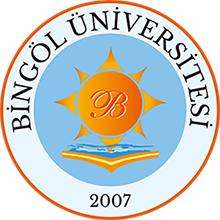'الرمز في النص الشعري لدى الشاعر بدر شاكر السياب'
Abstract
الملخص: لقد حظي (الرمز) برقعة واسعة من الاهتمام من لدن العديد من الشعراء والباحثين في مجالات معرفية مختلفة، وأسفر هذا الاهتمام عن رصيد وافر من المحاولات التعريفية، والتفسيرية والتوظيفية للرمز، فقاموا بتعريفه لغويا واصطلاحيا،ً وهذا التقسيم ما اعتمد أ ت عليه في تعريف )الرمز(، حيث أجمعَ غالبية اللغويين على أن الرمز لغةً: ))تصويت خف ي بالل سان كالهمس أو إيحاء وإشارة بالعينين أو الحاجبين أو ال شفتين((. أما اصطلاحا فإنه: ))شيء محسوس يختار للدلالة على احدى صفاته المسيطرة، كالمياه رمز الشفافية والتطهير((. وضمن هذا البحث يحدد الرمز بنوعين: )اصطلاحي(و )انشائي(، وقأي دَ )الرمز الاصطلاحي( بمستوى الاستعمال العادي للغة حيث الالفاظ لا تتعدى كونها مجرد إشارات تنحصر قيمتها بما تدل عليه من معاني شائعة، و )الرمز الانشائي( يرتقي بدلالاته إلى مستوى أبعد من الغموض نسبةً إلى الرموز الاصطلاحية. وقد يشترك الرمز والإشارة والعلامة واللغز...، في بعض الصفات إلا أن الرمز يختلف عن جميع هذه الأشكال من حيث دلالته واستعماله، لأن الرمز يتميز بخصائص عديدة لا تتوفر في غيره، منها: السياقية والرؤيا الذاتية والتجريد...، وكل هذه الأمور واردة في هذا البحث وبالترتيب، ومن الشعراء الذين وظفوا الرمز في شعرهم وبكثرة، شاعرنا بدر شاكر السياب، فاستخدم العديد من أنواع الرموز، منها ما هو مستوحى من الطبيعة على نحو: ] المطر، والبحر، والنهر)بويب( [ ، ومنها ما هو مستوحى من أسماء الأماكن على نحو: )جيكور، والقبر، والعراق(، كما اتخذ السياب من الإنسان بشكل عام والمرأة بشكل خاص رمزاً للتعبير عن العديد من الامور ذأكر منها في هذا البحث: )الأم، والحبيبة، والزوجة(، كما استوحى السياب جانبا مهما من رموزه من الأساطير والخرافات المحلية والعالمية، ذأكر منها في هذا البحث: )تموز، وسندباد(، كما استعمل السياب الرموز الدينية في شعره، وأكثر منها لتوسع .دلالاتها، على نحو: [ النبي )أيوب(، والمسيح )عيسى)، وهابيل وقابيل ]، ولأهمية حياة الشاعر في فهم الرمز تم ذكرهأ في بداية هذا البحث) (التمهيد) ÖZET:
Sembol; farklı bilim alanlarında gerek şairler gerek araştırmacılar tarafından büyük ölçüde ilgi görmüştür. Bu ilginin sonucu olarak çok sayıda tanımlama çabaları ve sembol yorumlama girişimleri doğmuştur. Hem dile hem mana olarak tanımlamışlar. İşte bu şekilde; sembolün tanımı için bu girişimler baz alınmıştır. Dil açısından çoğu dil bilimcisi dildeki sembol için: (Fısıldama gibi dil ile yapılan anlamlandırma, göz, kaş veya dudaklar ile yapılan işarettir). Ancak terim olarak: (Baskın ve ağır özelliği vurgulamak için kullanılan somut bir şeydir. Örneğin şeffaflığın ve arındırılmışın simgesi olan su). Bu araştırmada sembol iki tür olarak belirlenmiştir. Terminoloji ve yapısaldır. Terminoloji sembol; dil açısından normal kullanımla sınırlandırılmıştır. Çünkü kullanılan sözcükler; işaret ettiği yaygın anlamlarla sınırlıdır. Yapısal sembol ise; terminoloji sembole göre daha geniş alana sahip olup gizem açısından daha üst seviyelere delalet etmektedir. Bazı özelliklerde ise sembol, işaret, iz ve gizem bir arada gelebilir. Ancak sembol; gerek delalet gerek kullanım akış, bağlamsal, vizyon ve kendini soyutlamada olduğu gibi çok sayıda özelliğe sahiptir. Tüm bu konular sırayla araştırmada yer almaktadır. Bazı şairler sembolü şiirlerinde çokça kullanmışlar. Örneğin şair Bedr Şakir Sayyab; doğadan esinlendiği sembolleri (yağmur, deniz, nehir) ve yer isimlerinden esinlendiği sembolleri (Jekor, kabir, Irak) kullanmıştır. Ayrıca şair Sayyab; kadın başta olmak üzere insanı genel olarak sembol olarak kullanmıştır (Anne, sevgili, eş). Şair Sayyab; kullandığı bazı sembolleri de yerli ve yabancı efsane ve hurafelerden esinlenmiştir (Bu araştırmada Temmuz ve Sinbad'dan bahsedilmiştir) gibi. Yazdığı dini şiirlerinde ise; geniş kapsamlı olduğundan çok sayıda dini sembolleri kullanmıştır (Peygamber Eyüp, Mesih İsa, Habil ve Kabil). Sembolü anlamak açısından şairin hayatı önemli olduğundan bu konuda araştırmanın başında (Giriş) zikredilmiştir. ABSTRACT:
The (symbol) has got a wide attention by many poets and researchers in different areas of knowledge, and this led to a multitude balance of attempts to define and to interpret , and use the symbol. They defined it linguistically and termed, and I adopted this division to definite the (symbol). Where the majority of linguists agreed that the of the symbol linguistically is (a hidden voice by tongue like whisper or intimation and signal by eyebrows or lips). But idiomatically: the symbol is (something significant used to refer to one of the dominant qualities, such as water transparency symbol and disinfection). As part of this research the symbol is identified into two types: (idiomatic) and (Compositinal). The idiomatic symbol is related to the level of the ordinary language usage where vocalizations are no more than mere signals limited according to their common meanings. (Compositinal symbol) optimizes to a wide level farther than the ambiguity of the idiomatic symbols. The symbol, signal, mark, and puzzle may be shared....... In some qualities, but the symbol is different from all of these forms in terms of significance and use, because the symbol is characterized by several characteristics are not available in the other.Including: contextual and vision and self-abstraction.... All of these things are included in this research, in order, One of the poets who used the symbol in his poetry in abundance, poet Badr Shaker Al-Sayyab, he used many types of symbols, some of them are inspired from nature such as: (rain, the sea, and the river (Bwayab) and some of them are inspired from the names of places like: (Jekor, the grave, and Iraq). Al- sayyab also used a human in general and women in particular symbol to express many of the things. Some of them have been mentioned in this search like: (Mother, beloved, and wife). As well as, Al-Sayyab inspired important aspect of his symbols of the local and global myths and legends, some of them have been mentioned in this research like: (Tamoz, and Sindibad) Al-Sayyab also used religious symbols very much in his poetry, because of their wide significations, as (the Prophet Ayoub) and Jesus Christ), and Cain and Abel. For the importance of the poet's life in understanding the symbol, he was mentioned at the beginning of this research (introduction).
Collections
- Temel İslam Bilimleri [162]

DSpace@BİNGÖL by Bingöl University Institutional Repository is licensed under a Creative Commons Attribution-NonCommercial-NoDerivs 4.0 Unported License..













